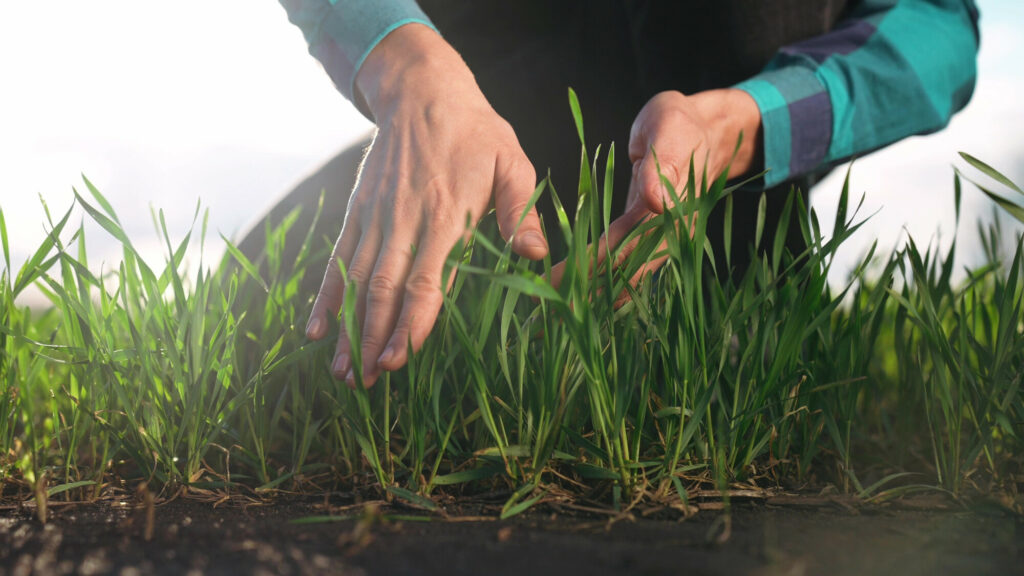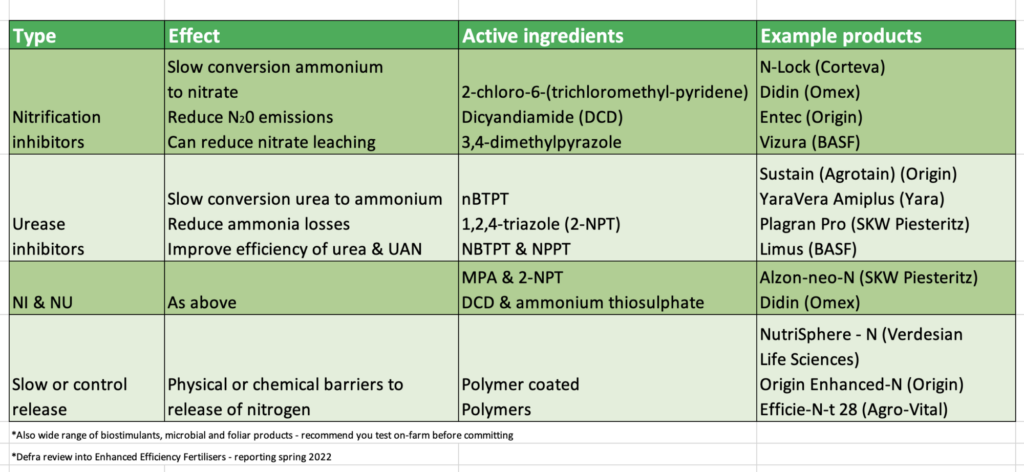Making nitrogen work smarter: Delivering profitable solutions
4th January 2022
There have clearly been some quite dramatic changes in the fertiliser industry over the last 6 months. At CropTec in November, ADAS crop physiologist and head of agronomics Dr Daniel Kindred discussed how to make the most efficient use of nitrogen.
According to the session chair, Mark Tucker, who is business development and head of agronomy for Yara, these changes in terms of European gas prices, the fact that Russia, China etc have all been putting protection measures in place to control the flows of fertiliser, led to a £200/week increase in costs of production. Then, of course, followed the shut-down of UK-based fertiliser plants – meaning all of this has put real pressure on the supply and pricing structure.
He went on to say that you also probably wouldn’t have expected two years ago, at the last Croptec, that decarbonisation would be so key right now, with green ammonia – carbon neutral production – being the goal.
Making nitrogen work smarter
Dr Kindred is very instrumental in the Yield Enhancement Network. He explained that, when trying to improve the efficiency of nitrogen fertiliser usage, you first have to consider the drivers of why you want to improve (reduce) nitrogen use, these being:
- Carbon from manufacture
- Nitrous oxide emissions
- Ammonia emissions
- Nitrate leaching.
Of course, another huge driver pushing towards fertiliser efficiency is now also the price of fertiliser, which is unprecedented – the value of nitrogen per kilo being £2/kg now, compared to the previous 70p/kg.
Dr Kindred went on to explain that whether the driver is price, or whether it’s carbon, or something else, what we need to do about it remains the same. He reckons we need to think about it from a range of perspectives:
- How to reduce demand?
– Grow crops with lower N requirements – whether that’s specific crops or varieties
- Reduce N losses from the system
– Cover crops over winter preventing losses through leaching
– Fertiliser efficiency (not losing nitrogen as ammonia from urea) and accuracy - Use available info to judge your N requirement
– Fully account for the N from the soil and manures
– Judge past success – via grain analysis soil testing and experimenting with levels on-farm - Adjust appropriately for the cost of N
– Consider the ‘opportunity’ cost – there is an opportunity to re-think the mindset behind nitrogen decisions - Monitor the crop to avoid deficiency and excess
Growing low nitrogen crops
In single nitrogen response experiments on Dr Kindred’s family farm comparing triticale, oats, wheat and barley in the same field in a second wheat situation, the triticale out-yielded the wheat by 2t/ha and needed 20% less nitrogen.
Also, there is good evidence that lower protein wheat varieties according to the RL have a lower N requirement for yield (forgetting about the milling premiums) compared to one with a higher protein content.
As a result, breeders are increasingly trying to put out varieties with a lower N requirement.
How much N to buy (and apply)?
At the end of the day, this is an economic decision and there are various tools available to help with this calculation such as RB209, Planet, all sorts of recommendations to help us get to those decisions, Dr Kindred said.
But you have to consider that N requirement is calculated as the rate which maximises profit, and that while figures within these tools are right on average across the UK, there is a massive amount of variability and you need to grapple with the question of whereabouts are you sitting on your farm in relation to these figures?
We also need to adjust for price changes – although, over the last 5–6 years, we haven’t had to worry too much about that, reckons Dr Kindred. The questions here are what price did you buy fertiliser at, and what is the replacement cost in the future? Or are you keeping it for next year, depending on your attitude as to what prices are going to be looking like for fertiliser in the future? As well as what price you’re going to sell your grain for, obviously.
Economics of the N response
All of the current recommendations are based on the N response. Dr Kindred says the optimum N rate is defined as the rate at which an extra kg of nitrogen doesn’t pay for itself with additional grain yield.
This is defined by the break-even ratio (BER) – the kg of grain that it takes to pay for 1kg of nitrogen, Historically, this was 3:1, through the 70s, 80s and 90s. For example, with ammonium nitrate at £100/t, grain at £100/t, it took 3kg of grain to pay for 1kg of nitrogen. Since 2009, this was revised to 5:1 due to the price of fertiliser going up – corresponding to grain at £150/t and AN at £250/t. All of the current recommendations are based on a BER of 5:1.
However now, with grain at £200/t and AN £700/t, thinking about it in terms of grain at £200/t and nitrogen as £2/kg, that’s 10kg of grain that you need in order for each 1kg of nitrogen to be paying you back, for it to be worth applying it.
So, the rule of thumb is for every 1kg increase in this BER, it corresponds to a 10kg reduction in how much you should be applying.
Obviously, there’s consequences of applying less nitrogen, in that you’re going to get slightly less yield. But, Dr Kindred believes people overestimate the costs of changing nitrogen rates by around 50kg/ha. In actual fact, the response is very flat at that point. Whilst if you reduce from 200kg to 150kg, you might be losing around 0.3t/ha of yield, you’re saving £100/ha worth of N cost. If you think of that in terms of the margin, with current grain costs, you’re still better off this year compared to previous years.
However, the cost of getting it wrong now becomes much higher. In the past, the response curve has been flatter, but now it is steeper due to costs.
Deciding what N rates are right for your farm
This is a strategic decision. The important question is how much N do you need to buy. Use your previous experiences to judge past success, and inform future decisions.
Assess your needs according to:
- Yields, lodging, misses and overlaps, N offtake and NUE metrics
- Soil mineral N, organic matter and mineralisation measures
- Manures
- Grain analysis – grain protein indicates optima (@5:1 BER): 11% for feed wheat, 12% for milling
- Test different N rates on farm – apply 50kg N/ha more or less, in alternate tramlines.
Consider using N efficiency products:
Reframing attitude to N Rates
There is a big fear of missing out on yield, so many think: “Am I applying enough?” says Dr Kindred.
The reality is, that last 10–20kg of nitrogen you’re using, in terms of ROI/opportunity cost, using previous fertiliser costs (prior to the current price) you’re spending £7 per hectare in order to get £8 back – so the net benefit is pretty small.
The first 100kg of nitrogen applied, there’s no doubt that gives you 2–4t/ha in return. But as you move up the response curve, it’s giving you less and less.
So, you need to consider what return you’re expecting from the last bit of investment.
Conclusions
Dr Kindred concluded by saying don’t be too afraid to cut N rates back, remembering that applying high N rates isn’t what gives high yields – there is a relationship there, but the variability in N applied is not solely the cause of variation in yield.
Use a range of tools to assess whether past N rates were right. There’s a good choice of tools available to do this, and it’s worth spending more care on tools for tracking N status and working out how to make the most use of those.
The pressure that we’re seeing now from high fertiliser prices is the same pressure we’ll be seeing in the future, from a carbon perspective.


